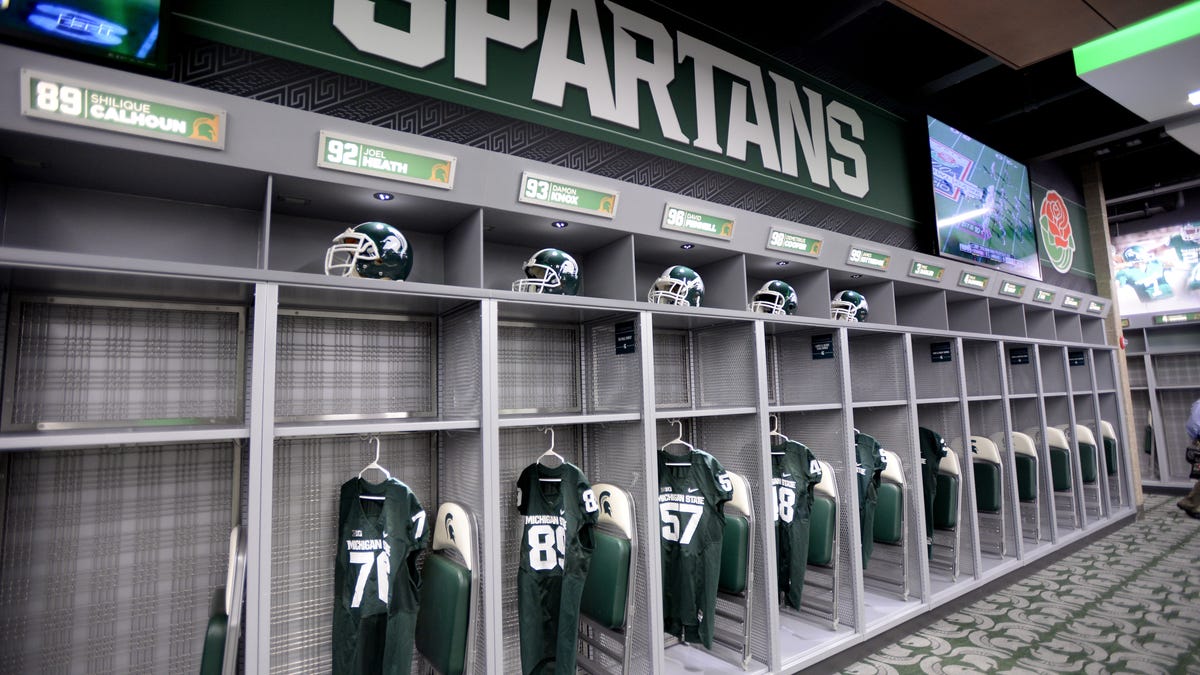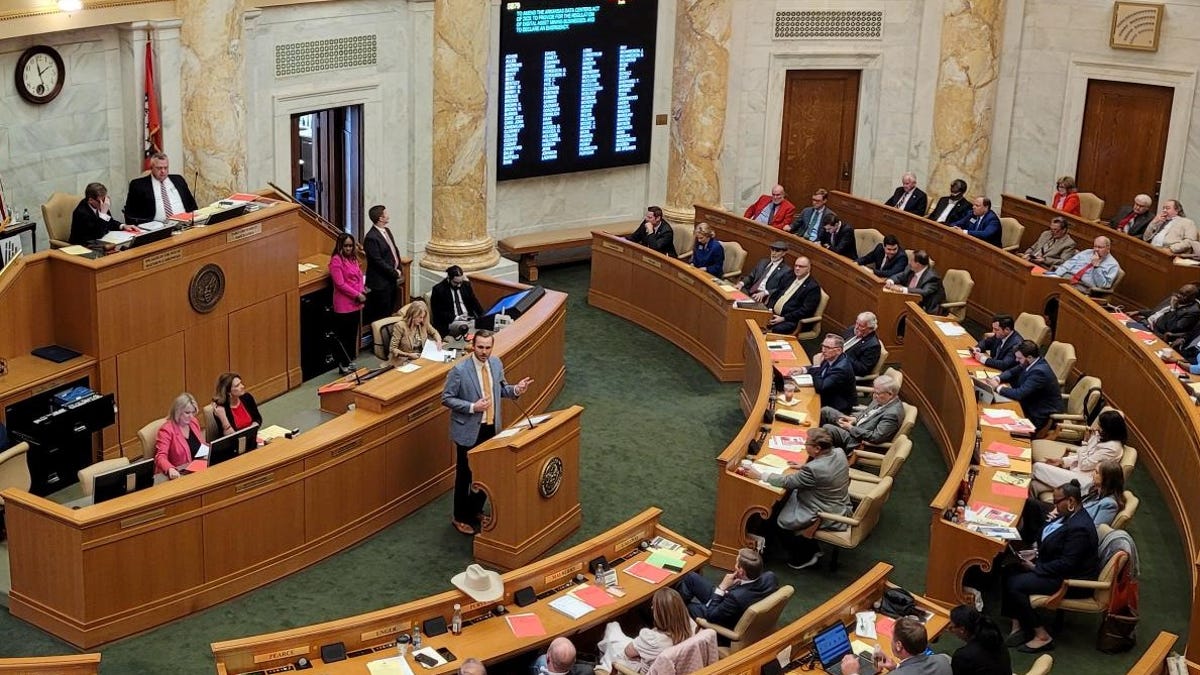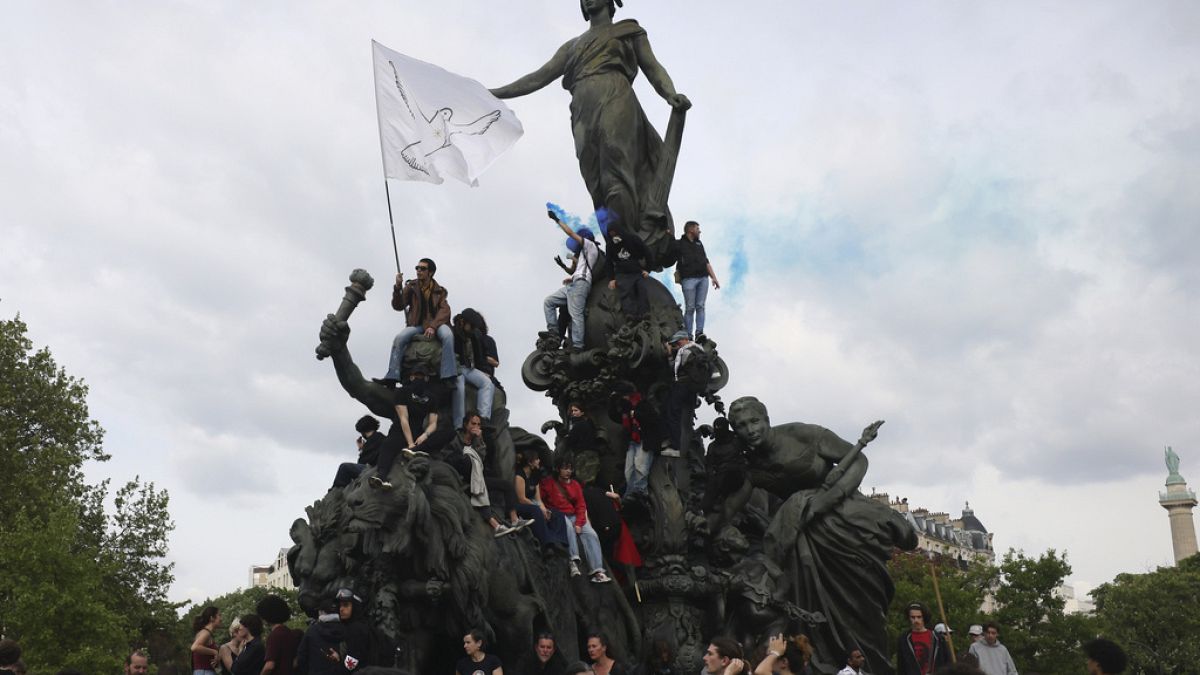Massachusetts
‘A math problem’: Providers support limits to Massachusetts emergency shelter capacity

For Mark DeJoie, the head of North Shore human services provider Centerboard, Inc., the need to limit the number of people in the state’s emergency shelter system boils down to a simple “math problem.”
“There’s just too many people for too few units. And that, too, has been exacerbated because of the migrant influx,” he said in an interview. “We’re dealing with an immigration crisis as a shelter system. We’re not built for that. We’re built to house families.”
An influx of migrants over the past year has pushed a shelter system built to handle about 3,000 families each year to its limits, forcing providers across the state to scramble to find additional housing units for the thousands of new arrivals that have made their way to Massachusetts.
More than 1,500 families have entered the emergency shelter system since Gov. Maura Healey declared a state of emergency at the start of August. The Executive Office of Housing and Livable Communities reported 7,089 families in the system as of Friday, with 3,624 at traditional sites, 3,376 living in hotels and motels, and 89 at temporary sites.
Many, including Healey, other providers, and advocates, have described the scenario as unsustainable without assistance from the federal government and as costing the state tens of millions in taxpayer dollars, at least, each month.
It led Healey this week to limit the number of families that can stay in the system to 7,500, a move that will surely test the boundaries of Massachusetts’ right-to-shelter law, which requires the state to temporarily house homeless families with children and pregnant women. Healey argued the state has neither the money, space, nor personnel to keep expanding the system.
For a handful of shelter providers who say they were feeling strained months ago, putting a cap on the number of families in the emergency shelter system was inevitable. Still, others are worried what will happen to those who arrive in the state once all the space is taken up.
“We are grateful for the administration’s all-hands-on-deck approach to the (emergency assistance) shelter crisis since taking office, but fear that the announced changes may result in children and families being unable to access shelter when it is needed the most,” a trio of housing policy and law groups said in a Friday statement.
The logistics of housing a never ending stream of migrants arriving in states across the country — most who fled unstable and dangerous conditions at home and made a treacherous journey to reach the United States — have vexed Democratic governors and mayors this year in places like New York City and Chicago.
Healey is no exception.
What started as an apparent political stunt with tens of migrants landing on Martha’s Vineyard last year at the behest of Florida Gov. Ron DeSantis, just before Healey took office, has turned into a very real problem for Massachusetts and emerged as one of the first tests of the Healey administration.
The Healey administration and some providers say part of the answer to reducing the number of families in the system is access to work training and federal authorizations that will allow them to secure jobs.
The Central Massachusetts Housing Alliance, a service provider based in Worcester, was at capacity in July and has doubled shelter capacity since November 2022, said Executive Director Leah Bradley.
The organization continues to hire staff “and do the things that we need to do, but we just can’t keep up,” Bradley said.
“It’s really a federal issue that needs some federal intervention,” Bradley said in an interview. “The folks that are coming here are lawfully here, and the federal government has said that they’re allowed to be here so it really is something that we just need the federal government to partner with us on this.”
It is anybody’s guess as to whether the federal government will send more direct aid to Massachusetts, though the Biden administration has said it is attempting to reduce the time it takes to process applications for work authorizations and sent a Department of Homeland Security team to Boston this month.
Healey on Friday applauded a $1.4 billion funding request for a shelter and services program run by the Department of Homeland Security, which handed Boston and the state $1.9 million earlier this year to expand shelter and transportation services for migrants.
“More funds from the state government, and particularly the federal government, will enable us to provide job training, (English as a second language) training, and provide the opportunity for people to move out of the emergency shelter system, out of motels into apartments so they can become a part of our thriving economy,” said Cindy Rowe, president and CEO of the Jewish Alliance for Law and Social Action.
But money alone will not fix the issues Massachusetts’ emergency shelter system faces, said DeJoie, the head of Lynn-based Centerboard, Inc. The problem is lack of space and ability for migrant families to quickly find work, build a source of income, and exit the system, he said.
“Quite frankly, the people that are here, we could use them,” DeJoie said. “I would hire some of the people that are living in our shelter just because the skills that they have, the translation services, the cooking abilities they have. But I can’t.”
Staff Photo By Stuart Cahill/Boston Herald
Centerboard’s office in Lynn. (Staff Photo By Stuart Cahill/Boston Herald)

Massachusetts
Healey’s hiring cooldown off to bad start: $14.2M added to Massachusetts public payroll

Nearly 200 employees joined the ranks of Gov. Maura Healey’s administration in the month after strict hiring measures were put into place across the executive branch to control costs amid flailing state revenues, according to a publicly available database.
The 199 workers who started their jobs between April 4 and April 28 collectively added more than $14.2 million to the $3 billion state payroll through yearly salaries alone with the highest-paid worker, a chief nursing officer at the Department of Public Health, taking home $159,120, a Herald analysis of state records shows.
The top five new hires, including the DPH nursing officer, make at least $134,515 a year, according to state records. Those hires also work in the Executive Office of Health and Human Services and the Department of Transportation.
A spokesperson for Healey’s budget-writing office said the 199 hires included positions for which job offers were made before the hiring measures took effect on April 3.
“It was always assumed and communicated that hiring would continue during this period through exempt positions and waivers for critical needs. We will continue to evaluate the state’s fiscal needs and make determinations about hiring and whether the timeline needs to be extended as we approach the end of June based on revenue collections, year-end spending, and other fiscal conditions,” the spokesperson said in a statement to the Herald.
The database covers new hires for externally posted positions and does not include internal promotions or lateral transfers within an agency, according to the Office of the Comptroller. The data does not reference any offers of employment that have been extended by the Healey administration but not yet made official.
Some offers of employment that have been publicly announced over the past month also do not appear in the database, which is organized by effective date of hire.
The list, for example, appears not to feature Alison Brizius, who was appointed last month by Energy and Environmental Affairs Secretary Rebecca Tepper to serve as the director of the Office of Coastal Zone Management.
Brizius, who starts in the role on May 6 and will earn a $155,000 yearly salary, accepted a job offer on March 26, according to a spokesperson for the Executive Office of Energy and Environmental Affairs.
Healey restricted the autonomy of executive branch agencies and departments to seek new employees last month without sign-off from her budget office. The move came in the face of struggling revenues and skyrocketing state-run shelter costs, two factors that have put pressure on Beacon Hill to rein in spending.
The immediate pause on hiring took effect April 3 and is initially scheduled to run through the end of June, according to a memo from the state’s interim chief human resources officer, Melissa Pullin. Hires, rehires, or transfers into the executive department are “permitted only where affordable within existing payroll caps,” the memo said.
But there is a lengthy list of positions across the executive branch that are exempted from needing sign-off from the state’s budget office, including seasonal hires, positions that are required to be filled by a court order or settlement agreement, returns from leave, and offers made before April 3.
Officials were asked to remove job postings that were not exempted and notify “applicants that the job opening has been temporarily suspended due to fiscal constraints,” according to the memo. Agencies had until April 16 at 5 p.m. to submit a waiver to hire new employees.
The spokesperson for the Executive Office of Administration and Finance said 176 waivers have been approved by the office, largely for full-time employees and positions that were posted before the hiring rules started.
Some 216 job postings for a total of 240 open positions were removed as of April 26, the spokesperson said. Job postings for which waivers were sought have not been removed, according to the spokesperson.
About a fifth of the workers who started a job in the Healey administration between April 4 and 28 joined the Department of Conservation and Recreation. A number of those employees were filling seasonal roles like temporary firefighters, greenskeepers, or conservation biologists, among others.
The Department of Conservation and Recreation alone added roughly $2.2 million to the state’s payroll, according to an analysis of the Office of the Comptroller’s database. Only a handful of new employees at the agency were permanent hires, the data showed.
A spokesperson for the Department of Conservation and Recreation said the agency largely operates on a seasonal basis, with spring through fall considered the busiest time millions are welcomed to parks, campgrounds, beaches, and pools.
The agency typically hires roughly 2,000 summer seasonal staff of which 700 to 800 are lifeguards and waterfront and pool staff, the spokesperson said in a statement.
The database also shows that the vast majority of new workers who joined the administration last month started their jobs between April 4 and April 9. Only three people started work in April after those dates, all of them at the Department of Developmental Services, according to the database.
Only one employee on the list who started work on April 7 at the Department of Developmental Services as a direct care worker had a reference letter from an elected state official, according to the data.
Massachusetts
Malden Man Arrested On Drunken Driving Charge After New Hampshire Crash

LONDONDERRY, NH — A Massachusetts man is due in court next week to face a drunken driving charge after a crash on early Tuesday morning.
Just before 1 a.m., several officers were sent to Route 28-Rockingham Road near Smith Lane for a crash report. When they arrived, they found a single vehicle had crashed into trees on the south shoulder of the road. A utility pole had also been severed.
During an on-scene investigation, police accused the driver, James Shea, 31, of Malden, Massachusetts, of being impaired, “attributing his condition as the sole cause of the accident,” police said on Facebook. He was arrested on driving while intoxicated and false report to law enforcement charges.
Police said Route 28 was closed for several hours during the cleanup and pole repair work.
Shea was released on personal recognizance and is due in Derry District Court on May 7.
Massachusetts
Biden’s latest student debt forgiveness action affects 3,500 Massachusetts borrowers

BROOKLINE – President Joe Biden’s administration announced Wednesday it is forgiving $6.1 billion in federal student debt for people who attended The Art Institutes, and more than 3,500 borrowers who went to one of the chain’s for-profit schools in Massachusetts will benefit.
Massachusetts Attorney General Andrea Campbell said $80 million in federal loan debt will be discharged for former students of the New England Institute of Art in Brookline.
“Predatory for-profit schools”
The Art Institutes shut down last fall amid allegations of fraud, with a federal investigation finding that fewer than 57% of students found jobs in their fields of study within six months of graduation. U.S. Secretary of Education Miguel Cardona said that students took out billions of dollars worth of loans to attend the schools, but “got little but lies in return.”
“These predatory for-profit schools harmed vulnerable students for their own financial gain, leaving student borrowers burdened with debt and without viable job or financial prospects,” Campbell said in a statement.
The NEIA filed for bankruptcy in 2018.
“Millions of students, including thousands of Massachusetts students, were taken advantage of by The Art Institutes and had their financial futures threatened,” Gov. Maura Healey said. “This will be transformative for these students’ lives and benefit our economy as a whole.”
Who qualifies for student debt forgiveness?
Students who enrolled in Arts Institutions between January 1, 2004 and October 16, 2017 will have their debt automatically forgiven. Borrowers do not have to take any action or make any further payments.
Biden’s push to broadly forgive student loan debt was blocked by the Supreme Court last year. The president said his administration has now been able to forgive $160 billion total for about 4.6 million borrowers.
-

 Education1 week ago
Education1 week agoVideo: Dozens of Yale Students Arrested as Campus Protests Spread
-

 News1 week ago
News1 week agoLarry Webb’s deathbed confession solves 2000 cold case murder of Susan and Natasha Carter, 10, whose remains were found hours after he died
-

 World7 days ago
World7 days agoHaiti Prime Minister Ariel Henry resigns, transitional council takes power
-

 Politics1 week ago
Politics1 week agoFetterman hammers 'a–hole' anti-Israel protesters, slams own party for response to Iranian attack: 'Crazy'
-

 World1 week ago
World1 week agoUS secretly sent long-range ATACMS weapons to Ukraine
-

 News7 days ago
News7 days agoFirst cargo ship passes through new channel since Baltimore bridge collapse
-

 World1 week ago
World1 week agoTurkey’s Erdogan meets Iraq PM for talks on water, security and trade
-

 World1 week ago
World1 week agoSpanish PM Pedro Sanchez suspends public duties to 'reflect'


















